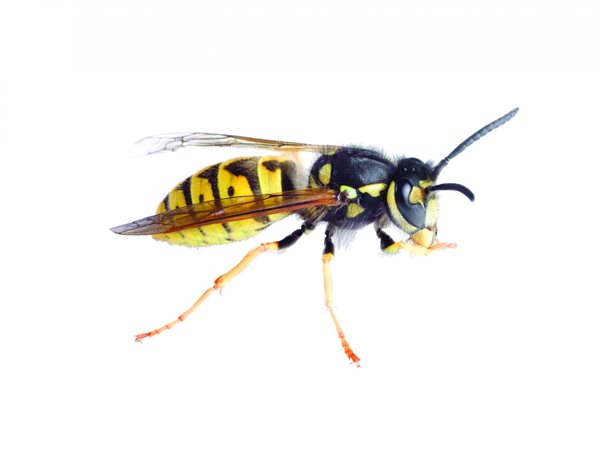Yellow Jacket Identification
Yellow jackets are known as predatory wasps because they scavenge for food and protect their nests at all costs. A typical worker is about half an inch in length, while the yellow jacket queen looks noticeably larger in size at an average of three-fourths of an inch long. Yellow jacket bodies look sleek and shiny, with two wings for flight. Their most distinct characteristic is the alternating black and yellow bands of color that cover their abdomen.

Detecting Yellow Jackets
Though yellow jackets are commonly known to nest in the ground, some species will build hives in attics, wall voids, sheds, and other accessible areas in yards. Their tendency to nest close to homes makes for unpleasant encounters. Yellow jackets frequently look like honey bees to many people. However, it is easy to identify the two stinging insects, as the honey bee is covered in dense hair, whereas a yellow jacket will have a hard, hairless body.
Problems & Prevention
Since yellow jackets are attracted to sugary sweets, these pests will hover at outdoor gatherings and ruin picnics. They will also swarm areas where garbage is left out in the open. Their presence at picnics may be annoying, but is nothing compared to the painful allergic reaction many people have to their sting. It is strongly suggested that people steer clear of nesting sites to avoid this unpleasant experience. When infestations grow in number and outdoor activities become a hassle, contact the professionals at Critter Control who are trained and experienced in identifying and removing yellow jackets and their nests.